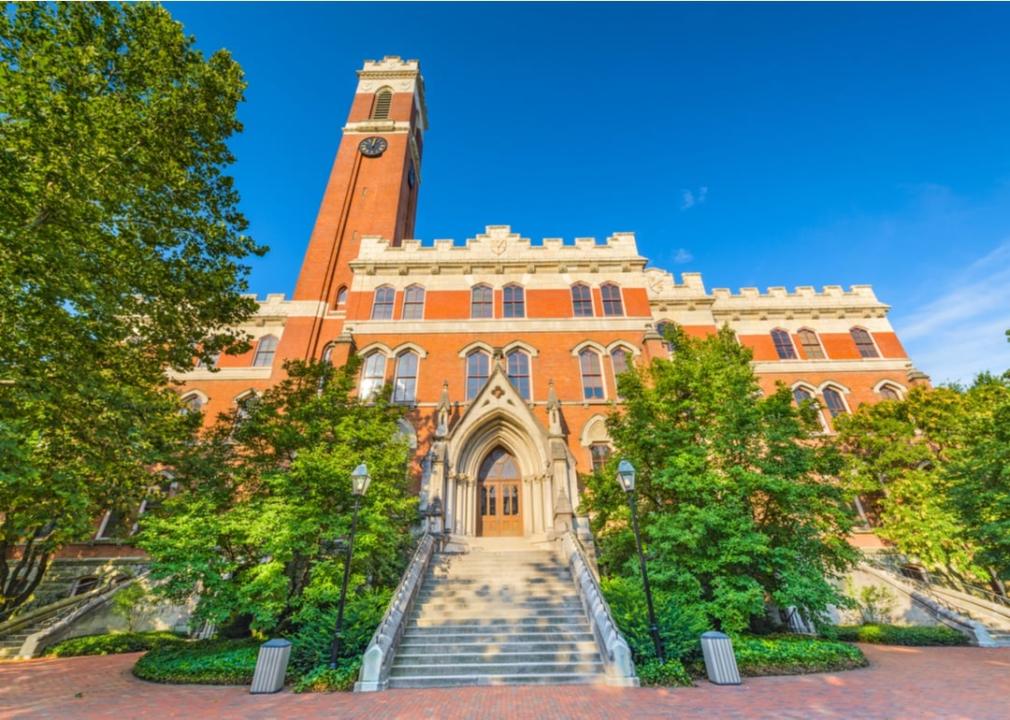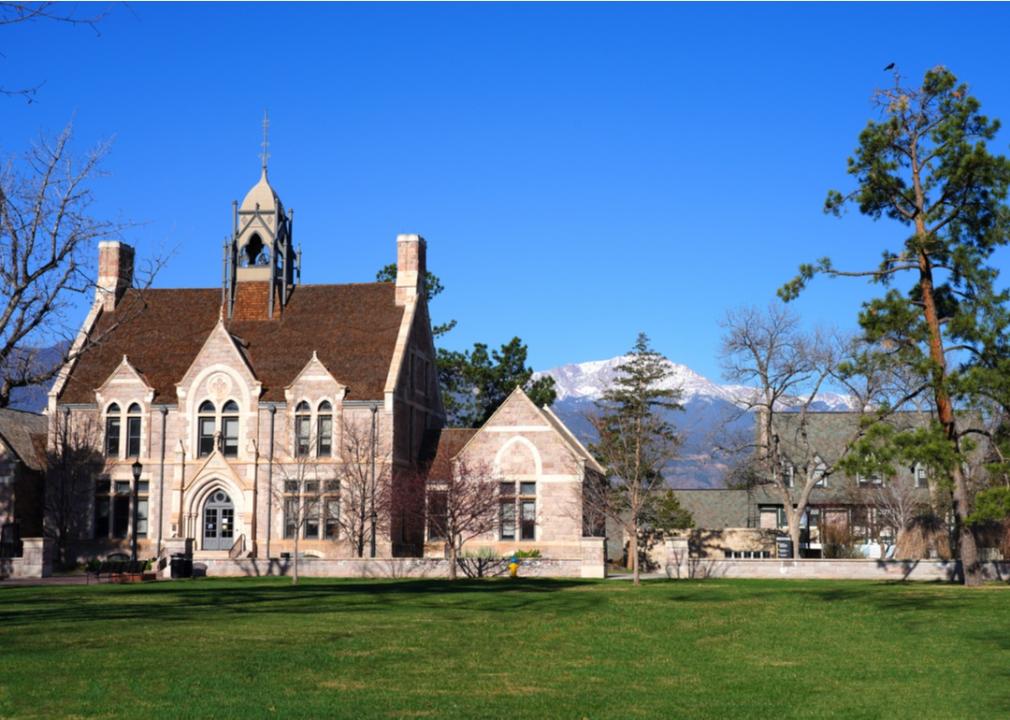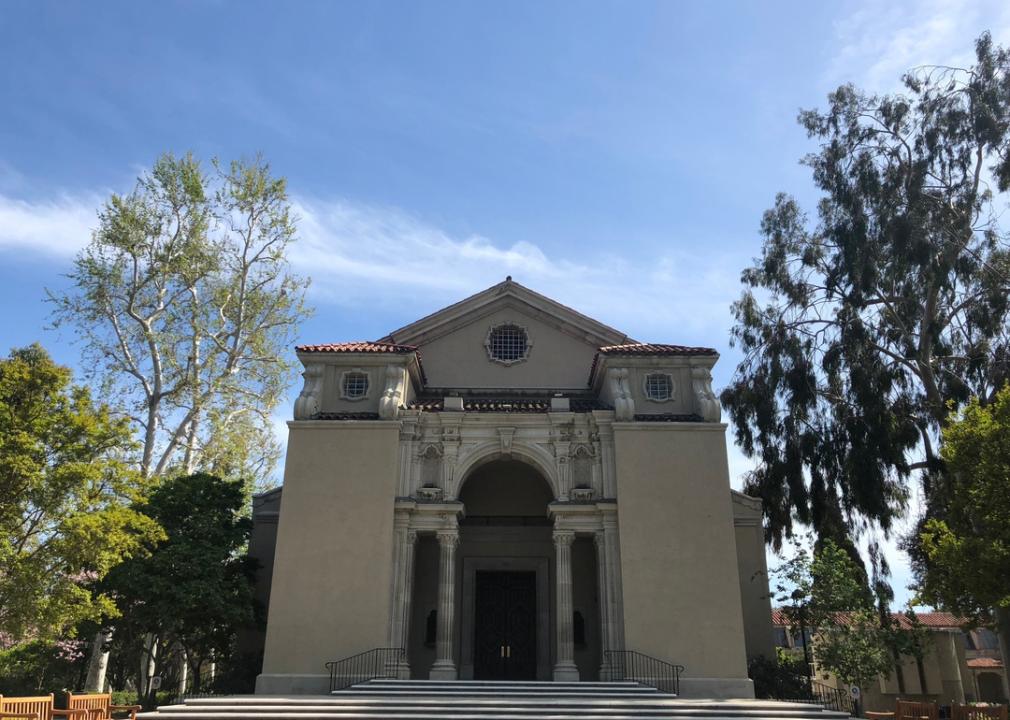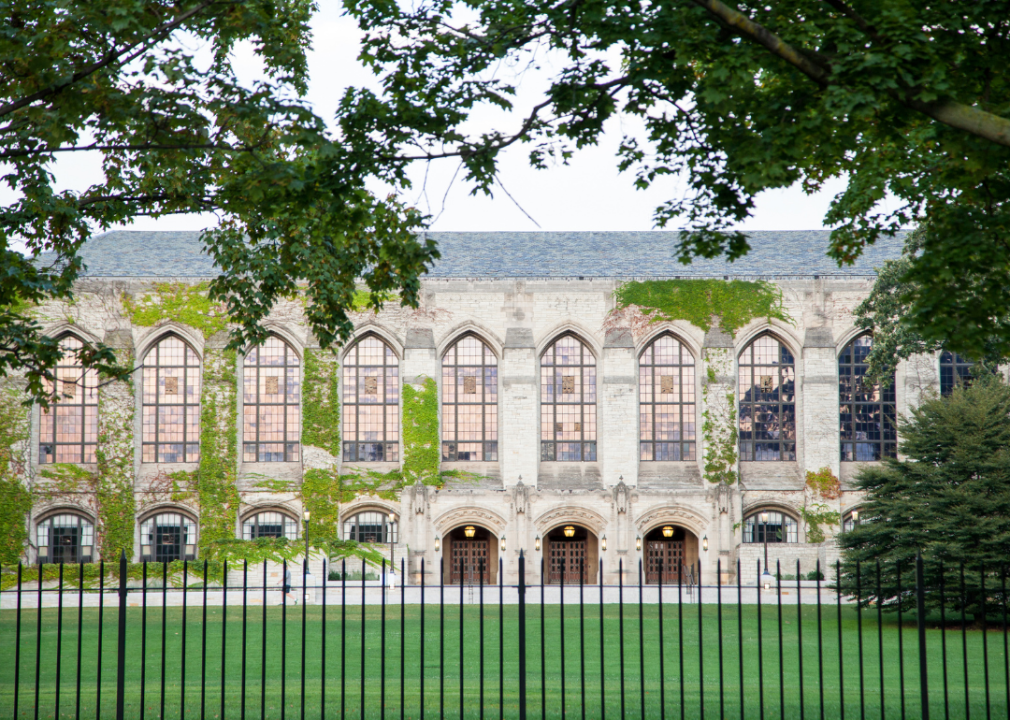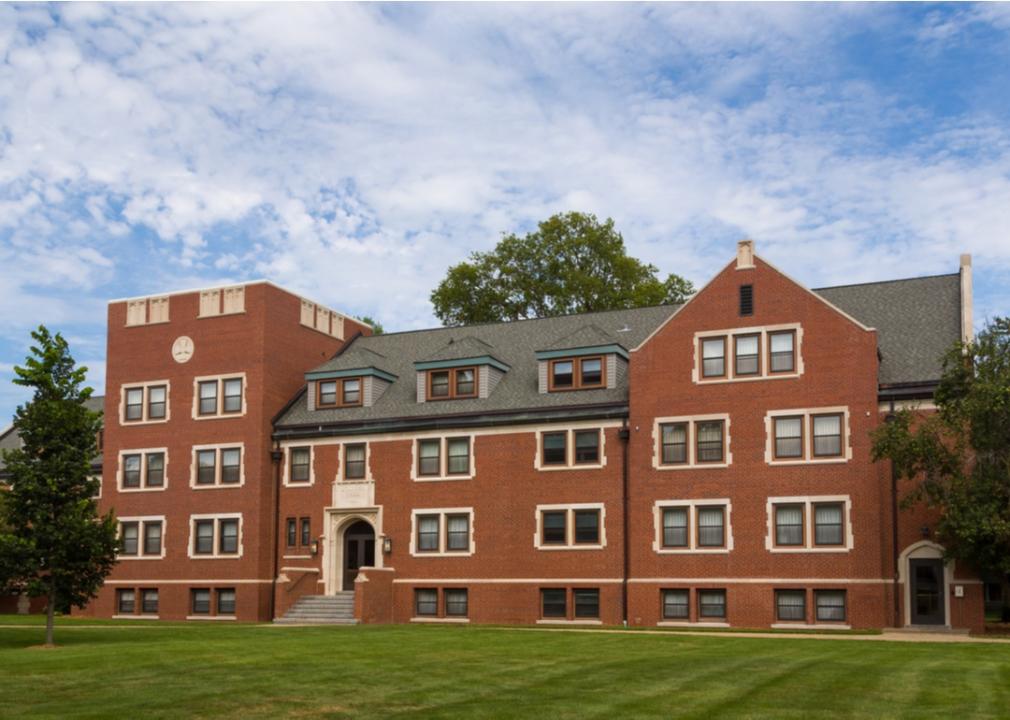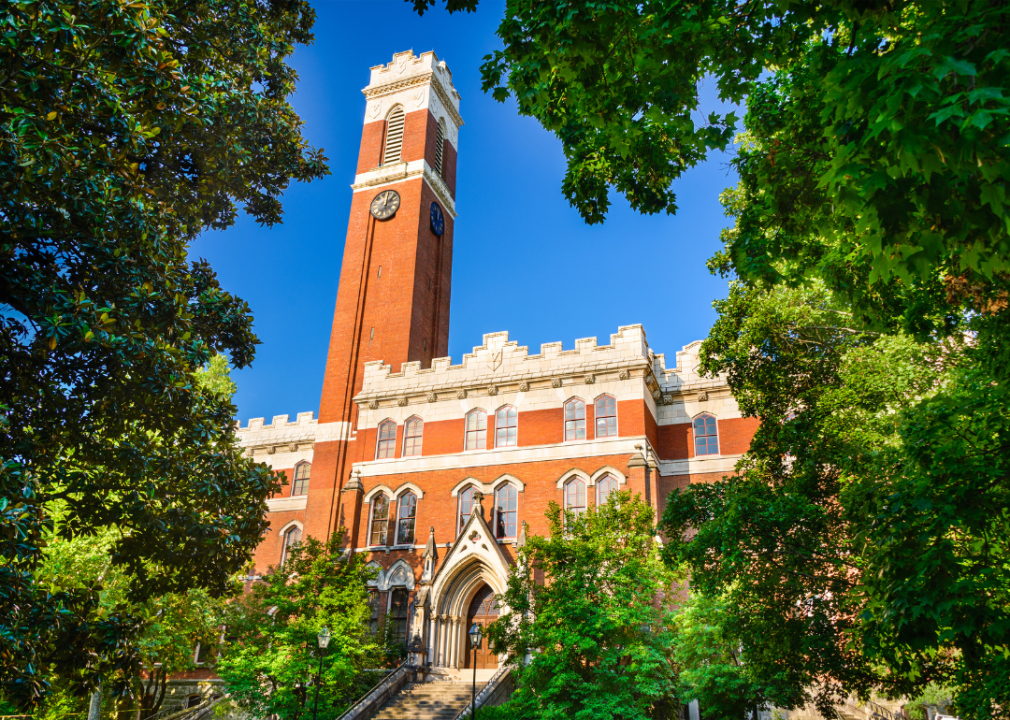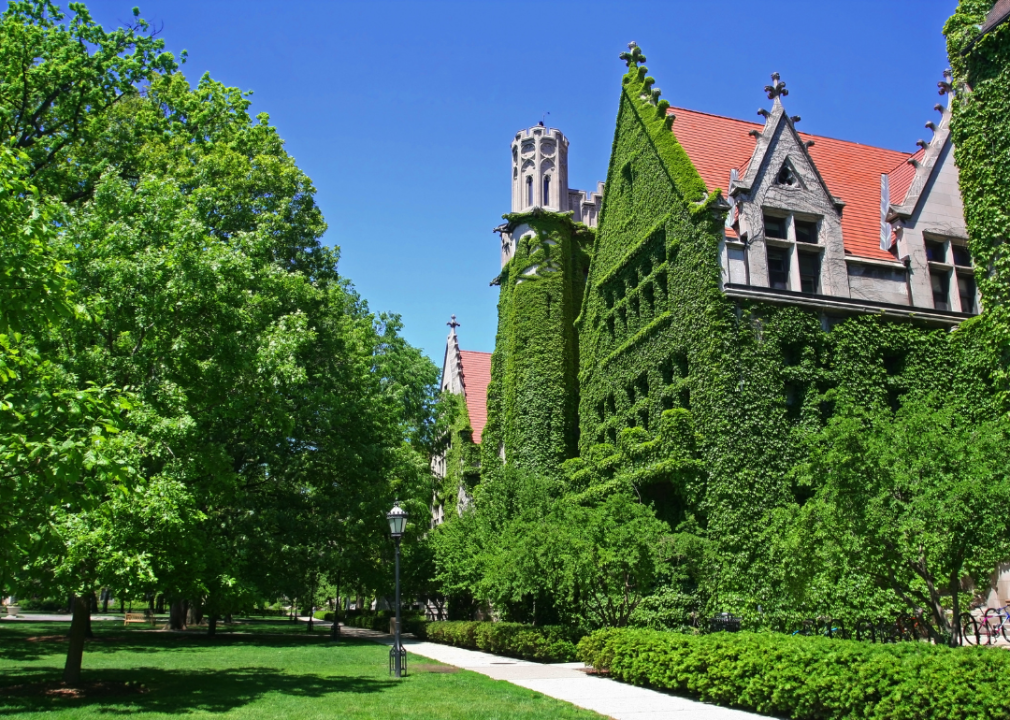Colleges where acceptance rates have decreased the most since 2001
Sean Pavone // Shutterstock
Colleges where acceptance rates have decreased the most since 2001
Campus of Vanderbilt University.
Each fall, thousands of high school students and their families begin the nerve-wracking process of applying to college. Whether families are navigating the admissions process for the first time or for the fifth time, it’s still a journey that requires a slew of research—and patience. While college enrollment has gone down over the last several years, enrollment in public and private universities throughout the 2000s and 2010s reached record highs.
EDsmart identified 10 colleges that have shown the greatest decline in acceptance rates between the 2001 admissions cycle and 2021. Data came from the Integrated Postsecondary Education Data System at the National Center for Education Statistics. Only colleges and universities with at least 1,000 applicants were included in the analysis. 2001 admissions data was not available for 129 colleges and universities, including Columbia University and Duke University. Acceptance rate and applicant and enrollment data is based on what schools submitted to IPEDS and may be slightly different than the final reported numbers. For each college, offerings that potentially make a school more attractive to applicants were included, from affordability to academic programs.
Determining the exact reasons why these colleges have seen a record-setting growth of applications over the last 20 years is difficult. For many students over the decades, pursuing a secondary degree is a path to improve their career and earning opportunities. Indeed, a 2018 College Board report found that the median annual earnings for workers with a bachelor’s degree was $24,900 higher than those whose highest degree was a high school diploma. While there are many factors at play in addition to education attainment—such as the type of career field and personal characteristics—the report also found that the unemployment rate for workers age 25 and older with at least a bachelor’s degree has consistently been half the rate of high school graduates.
The growing interest in applying to college may also be influenced by the widespread adoption of the Common Application, a single standardized online application form introduced in 1988. More than 1,000 colleges accept the Common App, which sees a 10% increase in applications for schools that adopt this system. The Common App makes the process streamlined for both colleges and applicants, as prospective students can fill out one form for several institutions. For high schoolers, saving time during the process can be appealing. It can also lead to applying to more schools since they don’t need to spend extra time to add a few more “safety” or “reach” institutions to widen their chances. Each school on this list allows applicants to apply with the Common App.
The conversation around the decreasing acceptance rates has spurred discourse among the higher-education community. Several Ivy League schools are looking to downplay their single-digit admission rates by withholding their admission data. Stanford University began the same practice in 2018 in hopes of making students feel less anxious to apply. Even as many institutions experience a rise in popularity with record numbers of applications, they continue to improve their offerings from student life to academic rigor.
Read on to see the list of schools that have seen the biggest change in competitive admission rates and learn more background about each institution.
![]()
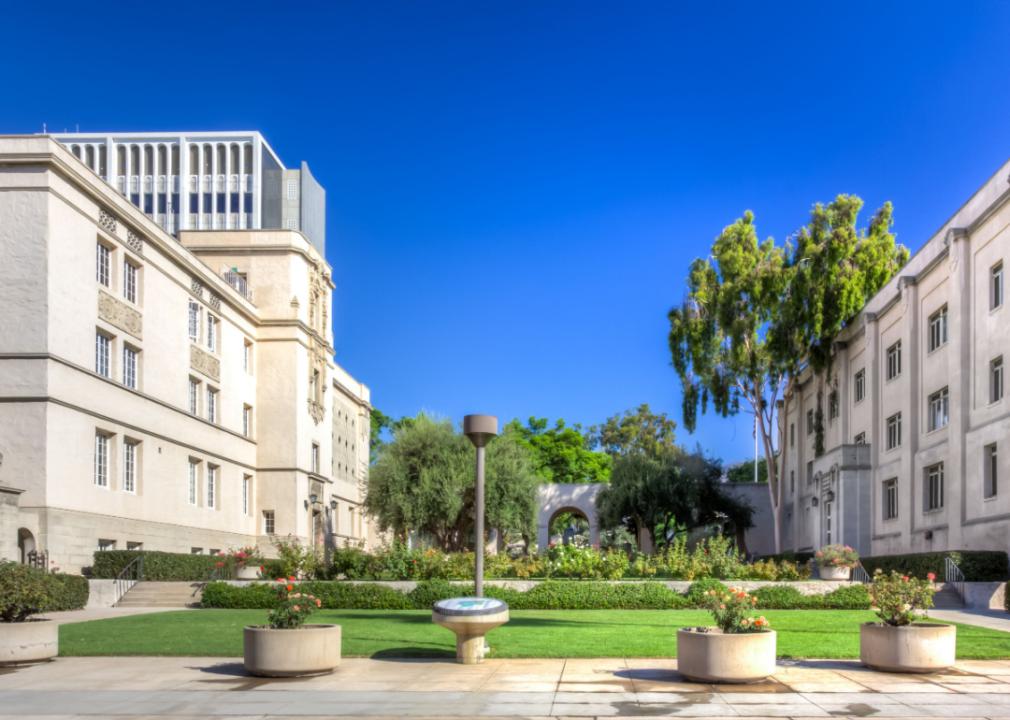
Ken Wolter // Shutterstock
#10. California Institute of Technology
Main campus entry to the California Institute of Technology.
– Pasadena, California
– Acceptance rate, 2021: 3.9 per 100 (74.4% decrease from 2001)
– Applicants, 2021: 13,026 (287.1% increase from 2001)
– Freshmen enrollment, 2021: 270 (98.5% increase from 2001)
Perhaps better known as Caltech, the Pasadena-based college has under 1,000 undergrad students and a 3:1 student-faculty ratio. Founded in 1891, the college was transformed into a top-tier science and engineering school by world-renowned astronomer George Ellery Hale, an early trustee, who discovered magnetic fields in sunspots.
Students can choose from almost 40 majors, including geobiology, the history and philosophy of science, and computation and neural systems. Faculty and graduates have earned more than 45 Nobel Prizes over the years, and the campus is home to research and engineering institutes exploring the deepest mysteries of Earth, the solar system, and the universe.
EQRoy // Shutterstock
#9. Colorado College
Colorado College at the foot of Pikes Peak mountain.
– Colorado Springs, Colorado
– Acceptance rate, 2021: 14.3 per 100 (75.0% decrease from 2001)
– Applicants, 2021: 10,975 (223.5% increase from 2001)
– Freshmen enrollment, 2021: 620 (175.6% increase from 2001)
Instead of following the usual two-semesters-a-year structure, Colorado College adopted a block plan. This allows for taking one class at a time as an intensive course: 18 days from 9 a.m. to noon. Per the college, this is equal to one class on a semester plan.
Colorado College offers more than 40 majors, which include political science, geology, economics, sociology, and environmental studies. This institution also has an outdoor education program, with 200 annual outdoor trips and more than 36 workshops and trainings.
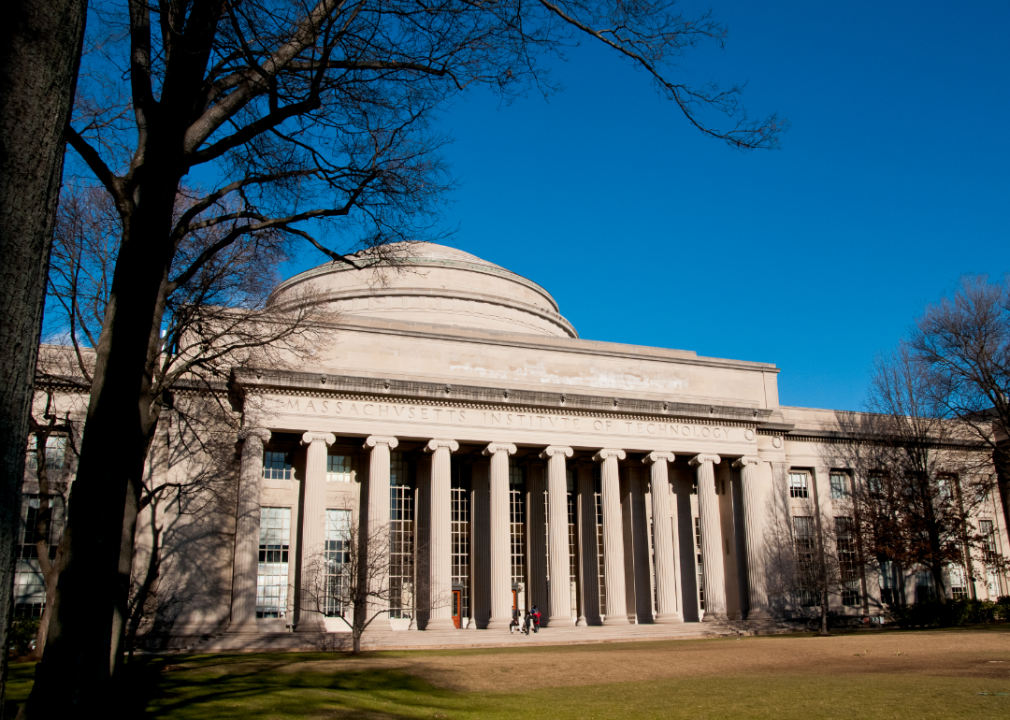
Canva
#8. Massachusetts Institute of Technology
Exterior view of the Massachusetts Institute of Technology.
– Cambridge, Massachusetts
– Acceptance rate, 2021: 4.1 per 100 (75.9% decrease from 2001)
– Applicants, 2021: 33,240 (216.9% increase from 2001)
– Freshmen enrollment, 2021: 1,177 (94.9% increase from 2001)
Founded in 1861, the Massachusetts Institute of Technology is a key element of the college-focused Boston area—technically just across the river in Cambridge, but very closely linked economically, socially, and logistically. It has about 4,700 undergraduates, plus another 7,200 graduate students, to whom it offers 57 majors, 59 minors, and—for those who complete physical education courses in sailing, archery, fencing, and shooting—a pirate certificate.
The science-focused university attracts mostly those interested in science, technology, engineering, and math, but also offers arts and humanities majors, including theater arts and linguistics. The school has long had close ties to the U.S. defense industry and government research projects, including space exploration and energy research.
Deborah Kekone // Shutterstock
#7. Pomona College
Mabel Shaw Bridges Hall of Music at Pomona College.
– Claremont, California
– Acceptance rate, 2021: 6.6 per 100 (77.2% decrease from 2001)
– Applicants, 2021: 11,620 (213.0% increase from 2001)
– Freshmen enrollment, 2021: 451 (124.4% increase from 2001)
Pomona College is part of a seven-institution consortium of California colleges. Pomona College students are a part of an 8,000-student community between these schools. The student-to-faculty ratio sits at 8:1, giving classes a more intimate experience. Among the nearly 50 majors offered are specialties like late antique medieval studies, cognitive science, and molecular biology.
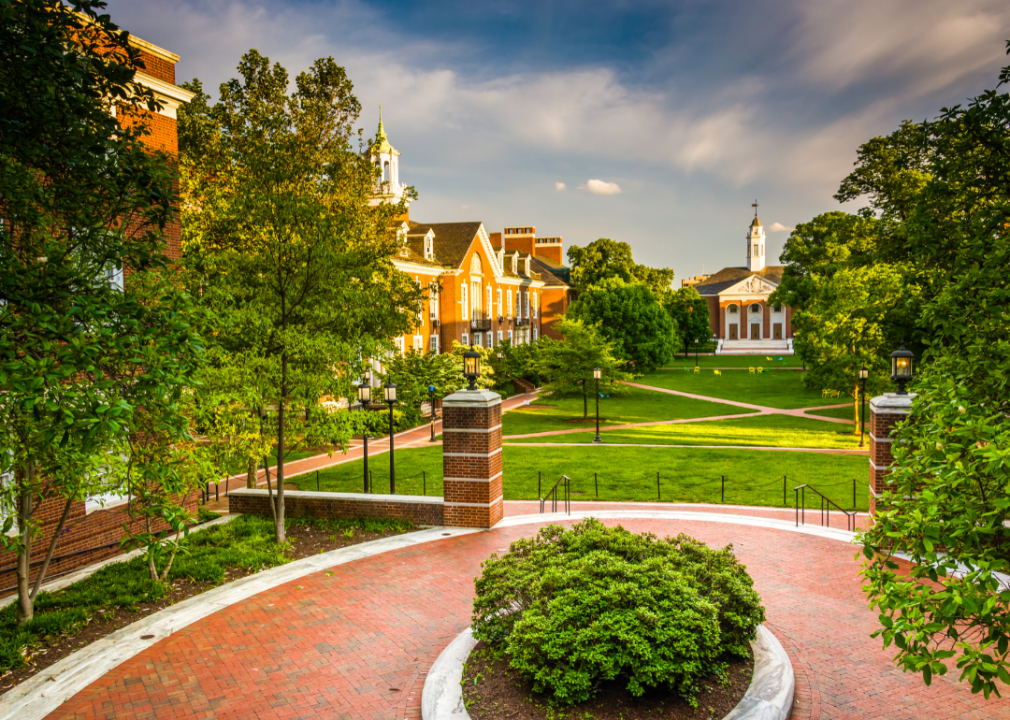
Canva
#6. Johns Hopkins University
Exterior view of buildings at Johns Hopkins University.
– Baltimore, Maryland
– Acceptance rate, 2021: 7.5 per 100 (78.1% decrease from 2001)
– Applicants, 2021: 39,515 (332.9% increase from 2001)
– Freshmen enrollment, 2021: 1,420 (133.2% increase from 2001)
Founded in 1876 with funds bequeathed by a Quaker railroad baron for whom the university is named, Johns Hopkins University has always been focused on scholarly research as well as teaching. With 5,300 undergraduate students who can choose from 50 majors and a student-to-faculty ratio of 7:1 with average class sizes of 23 students, the university offers seminars at all levels that involve intense discussion and experiential learning.
The university has nine academic divisions, as well as the world-renowned Applied Physics Laboratory, which works on national security and space science. The university has campuses in Italy and China and draws students from more than 50 countries.
Canva
#5. Northwestern University
Deering Library at Northwestern University.
– Evanston, Illinois
– Acceptance rate, 2021: 7.0 per 100 (78.7% decrease from 2001)
– Applicants, 2021: 47,636 (223.5% increase from 2001)
– Freshmen enrollment, 2021: 2,086 (132.3% increase from 2001)
Northwestern strives for an environment rich in diversity and inclusion, global engagement, and research opportunities. The university boasts 90 school-based research centers and 35 university research institutes and centers. Students from every U.S. state—and from over 75 nations worldwide—are undergraduates at Northwestern.
The school’s undergraduate offerings include over 120 majors and minors, with subjects ranging from Asian languages and cultures to computer engineering, and from gender and sexuality studies to journalism. Campus life includes hundreds of clubs and organizations for students to join, and the Northwestern athletics program is held in high regard as a member of the Big Ten Conference.
Ken Wolter // Shutterstock
#4. Grinnell College
Younker Hall on the campus of Grinnell College.
– Grinnell, Iowa
– Acceptance rate, 2021: 10.5 per 100 (83.7% decrease from 2001)
– Applicants, 2021: 10,513 (431.0% increase from 2001)
– Freshmen enrollment, 2021: 471 (172.3% increase from 2001)
On campus, the Grinnellian community consists of a 9:1 student-faculty ratio, with most classes having 20 or fewer students—something enticing for students looking for a small, Midwest college experience.
Grinnell offers 27 majors—including biological chemistry, economics, and political science—plus 17 concentrations. Founded by abolitionists in 1846, Grinnell has devoted itself to positive social change, and encourages volunteerism within the community and around the globe.
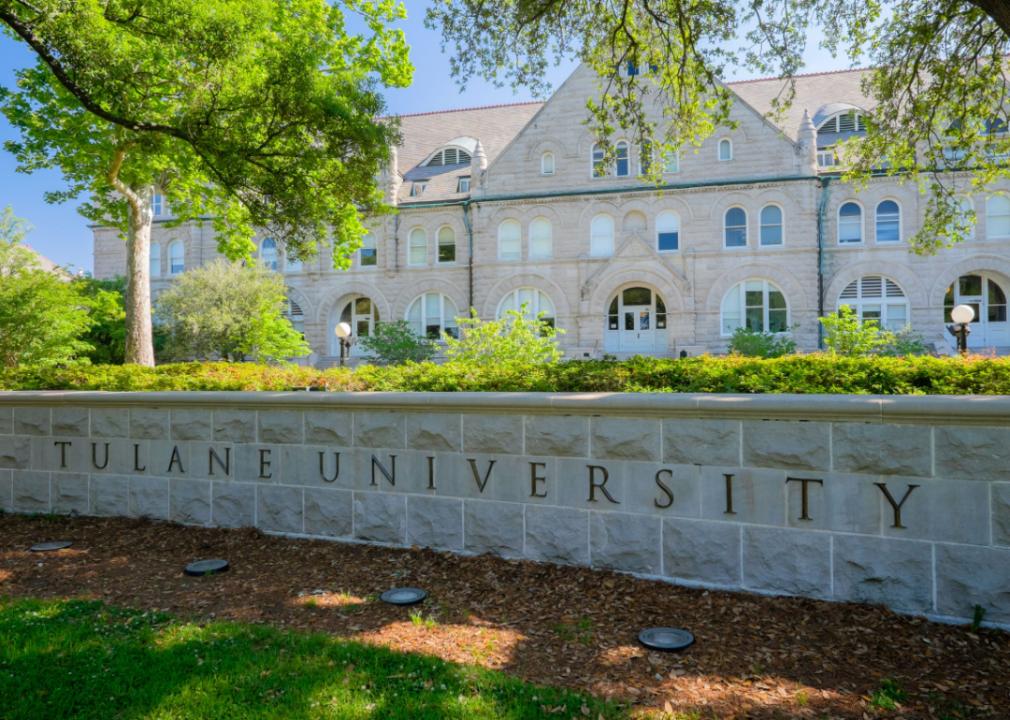
Canva
#3. Tulane University
Exterior view of Tulane University with stone sign in the foreground.
– New Orleans, Louisiana
– Acceptance rate, 2021: 9.6 per 100 (84.2% decrease from 2001)
– Applicants, 2021: 45,525 (319.1% increase from 2001)
– Freshmen enrollment, 2021: 2,027 (175.0% increase from 2001)
In the heart of New Orleans, Tulane was founded in 1834 to train doctors, but has expanded since into all fields of research and education. It serves 8,500 undergraduate students with 75 majors in fields as diverse as computational engineering, homeland security, Africana studies, and social policy.
Students engage with the community not only for entertainment and recreation, but also to help others: Community service is a graduation requirement, and about 1,000 students each year participate in the Outreach Tulane volunteer event.
Canva
#2. Vanderbilt University
Lecture hall at Vanderbilt University.
– Nashville, Tennessee
– Acceptance rate, 2021: 7.1 per 100 (84.6% decrease from 2001)
– Applicants, 2021: 47,152 (384.6% increase from 2001)
– Freshmen enrollment, 2021: 1,626 (115.4% increase from 2001)
Vanderbilt has extended its test scores nonrequirement through 2024. What is taken into consideration for admissions are academics, leadership, and engagement outside of the classroom. The university has four undergraduate schools—College of Arts and Science, Blair School of Music, School of Engineering, Peabody College of Education and Human Development—and more than 70 majors. In the 2024 Princeton Review ratings, Vanderbilt scored #1 for student quality of life and #2 for student support and counseling services.
Canva
#1. University of Chicago
Beautiful vine-covered building at University of Chicago.
– Chicago, Illinois
– Acceptance rate, 2021: 6.5 per 100 (85.2% decrease from 2001)
– Applicants, 2021: 37,974 (409.4% increase from 2001)
– Freshmen enrollment, 2021: 2,053 (283.0% increase from 2001)
Students can be found delving into the University of Chicago’s more than 50 majors, including art history, astrophysics, biological sciences, computer science, and human rights. Bringing inspiration to campus are regular speakers, including Supreme Court Justice Elena Kagan, Chance the Rapper, Canadian Prime Minister Justin Trudeau, Senator Bernie Sanders, Jon Stewart, and former President Barack Obama.
Bringing an emphasis on community service to the University of Chicago back in 1996 was Michelle Obama. The former first lady founded the University Community Service Center, which sees over 2,000 students giving back through more than 250 Chicago organizations.
Additional writing by Jeff Inglis. Data reporting by Emma Rubin. Story editing by Ashleigh Graf. Copy editing by Tim Bruns.
This story originally appeared on EDsmart and was produced and
distributed in partnership with Stacker Studio.
